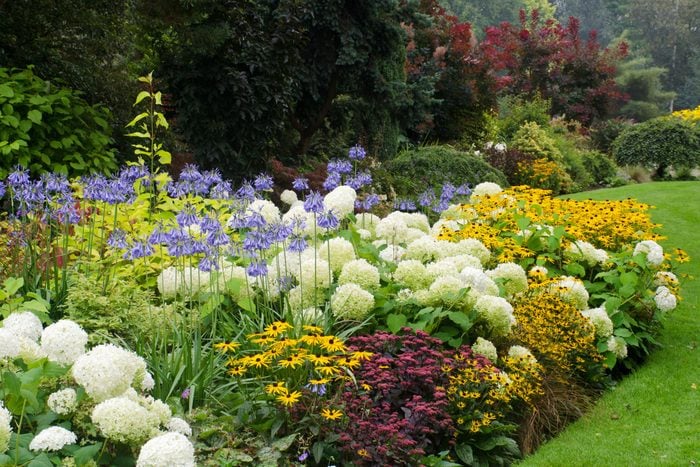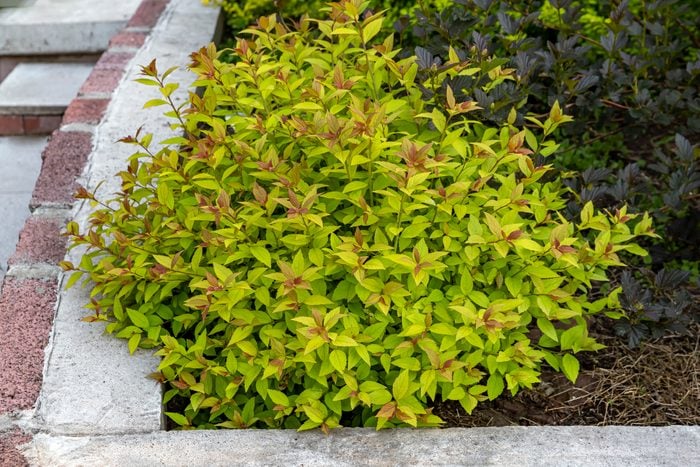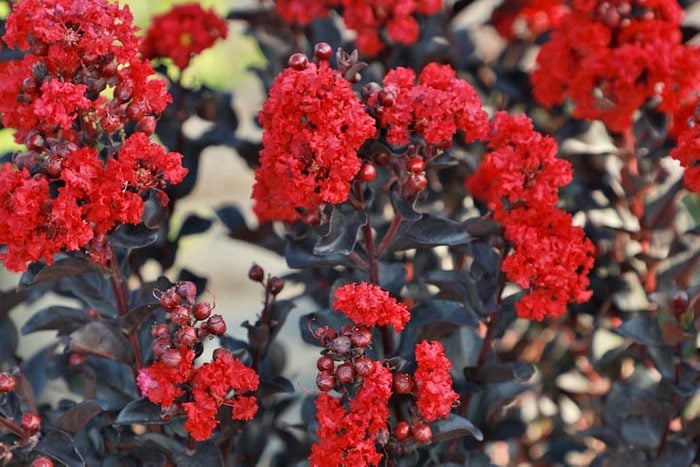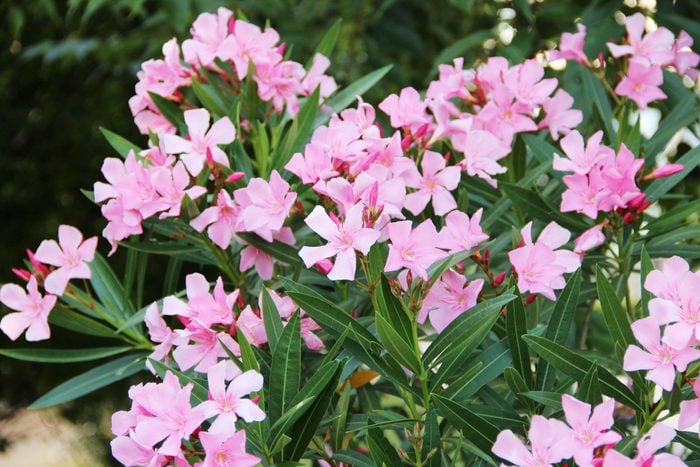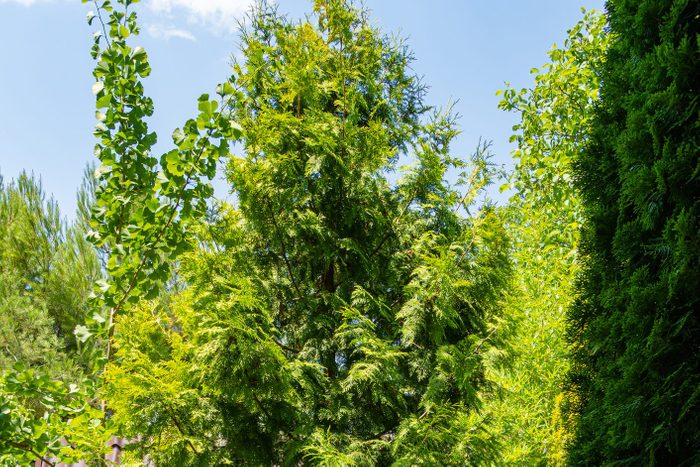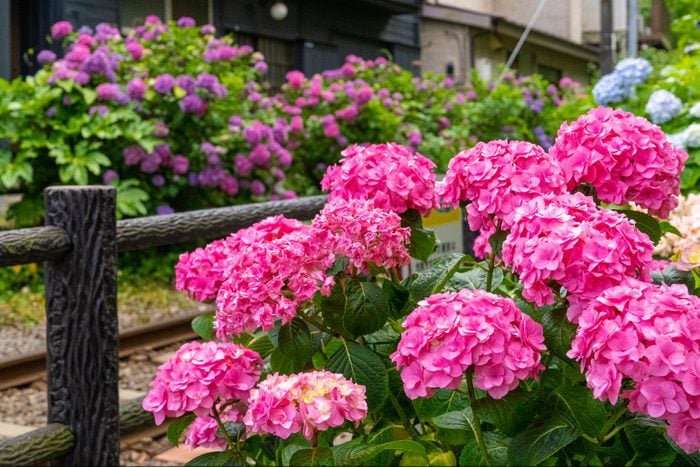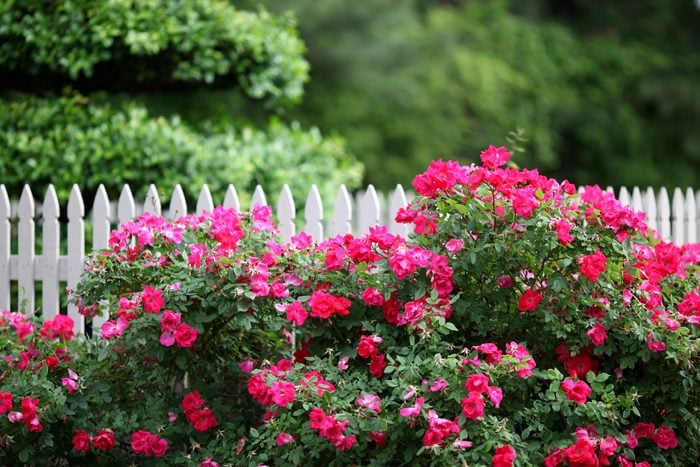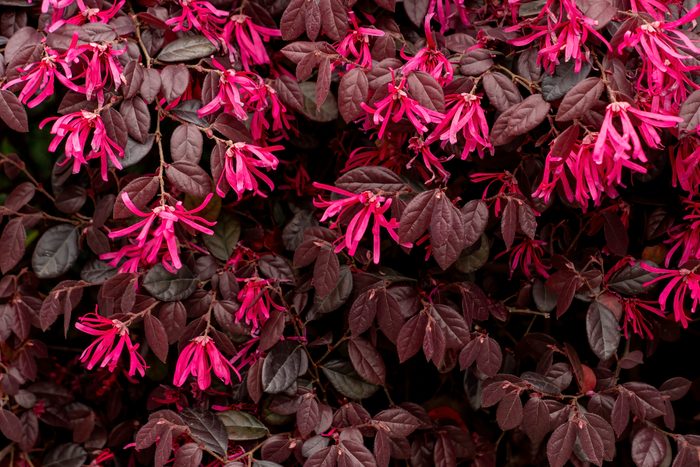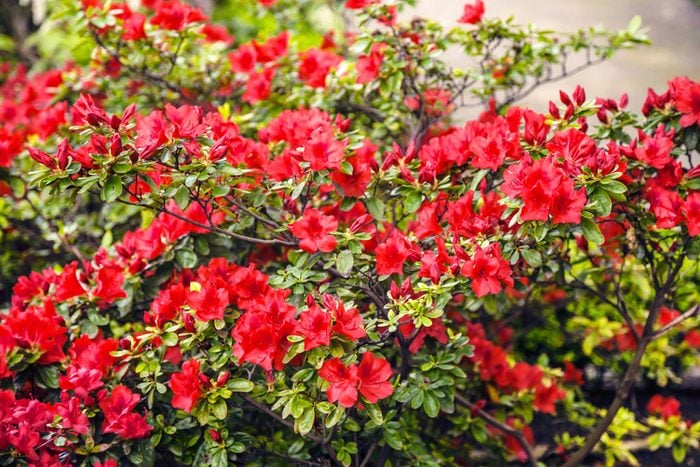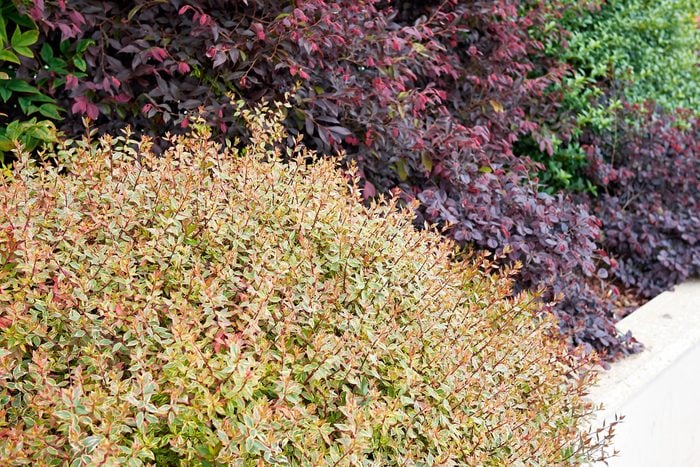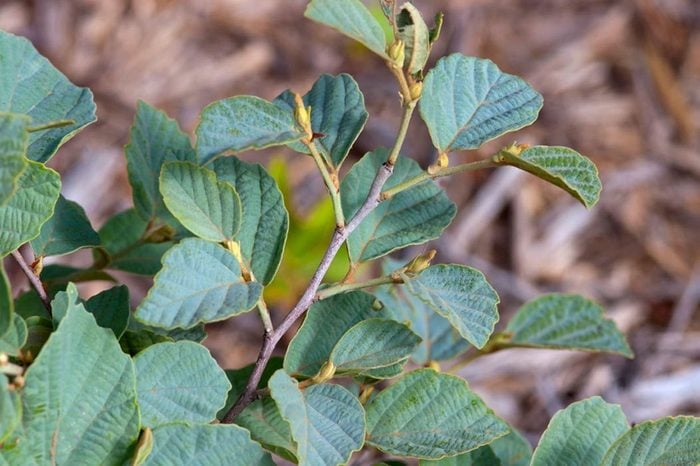Imagesbybarbara/Getty Images
Landscape Roses
If you love the look of roses but need low-maintenance shrubs, go for landscape roses. Unlike their long-stemmed cousins, this type is as easy to grow as any other shrub in your landscape. It blooms nearly non-stop from early summer to frost.
Plant breeders today select landscape roses because they resist common issues like black spot and powdery mildew, so you won’t need to continually spray them to keep them healthy. Most also do not need to be deadheaded for new flowers to develop. Knock Out, Easy Elegance, Drift and Oso Easy roses are good examples of landscape roses.
They’ll need six to eight hours of full sun to keep them blooming happily and healthy in Zones 4 through 9. Average moisture and rich soil help roses thrive. Consider planting a low-growing perennial-like catmint around the feet of your roses to cool the soil.
Loropetalum
If most of your foundation plants are green, consider adding a purple or deep red-leaved Loropetalum for an accent near the corner of the bed. These shrubs are famed for their everlasting colorful foliage and naturally graceful, arching form that contrasts beautifully with tightly clipped hedges.
Also known as “Chinese fringe-flower”, this shrub produces masses of ribbon-like blossoms in vivid shades of magenta, pink or white in the springtime. A few flowers pop up again through the summer. You’ll find Loropetalum varieties ranging from a few feet tall to more than 15 feet, so check the label carefully if your space is limited.
Mid-sized varieties like Purple Diamond grow four to six feet tall and wide, just big enough to plant a shorter row of brilliant flowering SunPatiens impatiens in front. Together, they’ll bring months of intense, saturated color to your landscape in full sun to part shade.
Loropetalum is hardy in Zones 7 through 10. It enjoys rich, acidic, moist but well-drained soil.
Flavia Morlachetti/getty images
Reblooming Azalea
All azaleas bloom in the spring, but a select few like those in the Encore and Perfecto Mundo series are rebloomers. They rest in early summer, then flower again from midsummer into fall in warm shades of crimson, coral, magenta, lavender, pink and white.
When not in bloom, their deep evergreen foliage shines. Most reblooming azaleas stay less than four feet tall, so they work well as a foundation plant or in the middle-to-front of the border.
Azaleas that only bloom in the spring tend to be more cold hardy than the reblooming types, so it’s important to check the USDA zone on the label if you garden in a Northern state. Your local garden center should carry the types that are winter hardy in your climate.
Most reblooming azaleas are hardy in Zones 7 through 10, although a few can survive in Zone 6. They thrive in moist, acidic, humus-rich soils. Surprisingly, this type of azalea grows and blooms best in full sun to part sun, whereas most other azaleas require shade.





















